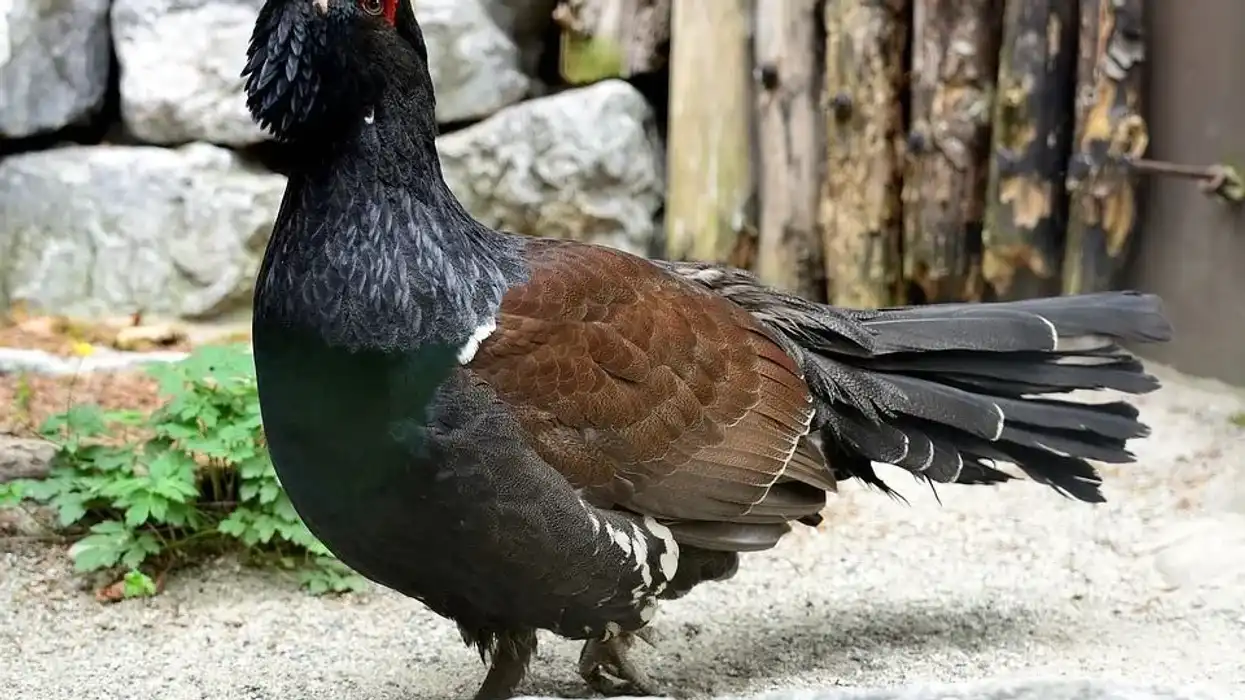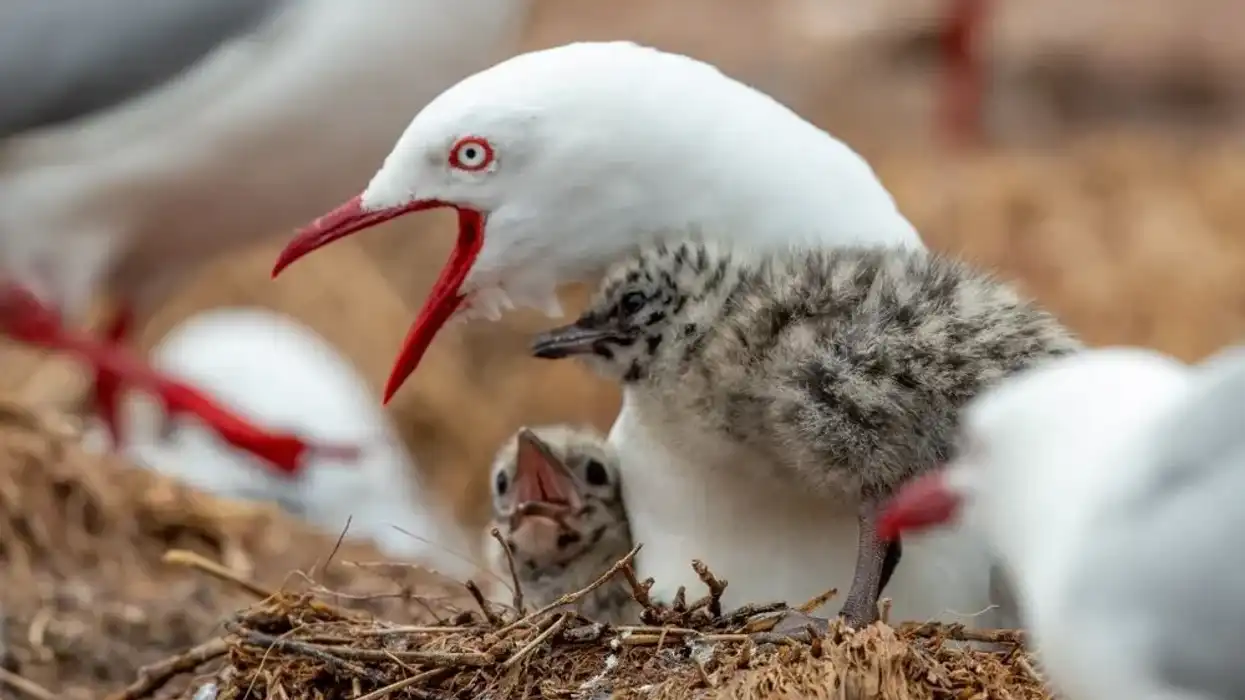A western grebe (Aechmophorus occidentalis) is a bird that belongs to the Podicipedidae group of animals. These birds have often been confused with ducks and other species like Clark's grebes due to their appearance.
Their range map usually focuses more on freshwater areas in California, Canada, British Columbia, as well as Mexico. Their nesting happens on the water with a depth of just 1 ft (30 cm). It has a long slender neck and a beautiful black-and-white body with red eyes.
They have comparatively shorter wings which makes it difficult for them to fly efficiently. This is the reason why these birds choose to dive into the water rather than fly in case of any danger or nearby threat. Their migration takes place in the winter season, especially in the North American cold areas towards warmer locations.
Read on to know more about these truly aquatic birds. For more facts about other animals, check our articles on the red finch and the duck-billed platypus.
Western Grebe Interesting Facts
What type of animal is a western grebe?
A western grebe (Aechmophorus occidentalis) is a type of bird.
What class of animal does a western grebe belong to?
Western grebes are birds that belong to the Aves class of animals.
How many western grebes are there in the world?
These grebes are included in the North American birds' list and have a breeding population with a range of around 130,000 birds across the world.
Where does a western grebe live?
These North American birds are found on the Pacific coast along freshwater lakes and open water bodies around Canada, Mexico, and California.
What is a western grebe's habitat?
These birds are aquatic species and are usually seen on the prairie and freshwater lakes near estuaries and open shores of North America. Their migration happens at night towards the Pacific coast during the winter.
Who does a western grebe live with?
This breed of bird is solitary and they do not live in large groups. They gather in a small flocks only during migration and feedings.
How long does a western grebe live?
These birds have a lifespan that might range up to 14 years of age while living in a favorable habitat.
How do they reproduce?
Western grebes are monogamous. However, it is not known if they mate for life.
This species of bird has an extensively elaborate mating system and behavior where a male and female pass through stages before actually breeding. The first step in their breeding process is when a male carries out different acts and calls to grab a female's attention.
The pair is formed based on which mate the female is attracted to rather than a hierarchy. Once a female agrees, the pair performs a ceremony during the breeding season consisting of different creet calls, dance moves, and postures.
They move around water bodies, digging their neck and head into the water, and splashing the water after coming out. The birds stretch their neck at a particular angle together and do a few weed and surface diving tricks before getting to the breeding process.
The male bird finds a sight suitable for open-water nesting. Their nesting spaces are usually close to their species. A female then lays around two to three eggs and incubates them. The male takes care of feeding the female and protecting the nest before the egg hatching takes place.
What is their conservation status?
This breed of bird has a strong conservation history and is considered to be of Least Concern based on the International Union for Control of Nature (IUCN) list.
Western Grebe Fun Facts
What does a western grebe look like?
These birds are monomorphic, meaning males and females do not have physical differences. They have brownish-black and white bodies with the upper part of their body, head, and neck being black and the underparts being white.
This bird has a long slender neck and red eyes with an olive or paler yellow-colored beak. Western grebes have a white-colored stripe on their wings which is usually visible during their flight. Baby grebes on the other hand are mostly gray and white in their coloration with dark eyes and bill.
How cute are they?
This species of bird gives birth to cute baby grebes. Western grebe adults look pretty and might qualify as cute too.
How do they communicate?
Western grebes are vocal, visual, and tactile. Apart from their mating calls and gestures, most use ticking and clucking sounds to communicate with one another. The ticks are usually heard by the parent birds trying to warn and indicate any nearby dangers to their young ones and clucking calls are usually to communicate about food and any nearby prey.
How big is a western grebe?
A western grebe bird size might range from 21.6 to 29.5 in (55-75 cm) with a wingspan range of 22.8-25.2 in (58-64 cm) in total. These birds are two to three times the size of the least grebe which is a similar species.
How fast can a western grebe move?
These birds display energetic behavior, especially during the breeding season when males and females move with quick and great strides. Even though their moves are so fast that it looks like they are almost walking on the water, the exact speed of traveling is not known.
How much does a western grebe weigh?
A western grebe is a medium-sized bird with a weight range of 2.5-4 lb (1.1-1.8 kg).
What are the male and female names of the species?
Western grebes do not have different names for male and female birds.
What would you call a baby western grebe?
A baby grebe is called a 'chick', just as any other similar species.
What do they eat?
Western grebes mainly feed on fish which is the favorite part of their diet. Apart from small fish, their diet also consists of crustaceans like crabs, mollusks, polychaete, frogs, salamanders, worms, insects, and carp too.
Where can a western grebe be found?
These birds have waterproof bodies and are mainly found in freshwater lakes, ponds, and rivers. They are known to nest in open water and are found in abundance in the British Columbian, Californian, and Mexican water areas during breeding seasons.
How long does a western grebe baby ride on its parents' back?
Grebe babies are famous for riding on their parents' back after hatching from their eggs. Although they are well versed in swimming and foraging, they stay with their parents for around 10 weeks until the baby officially takes its first flight.
Did you know...
Grebes are birds but rarely ever known for their flights. They have small wings which makes it difficult for them to fly. Western Grebes are rarely seen flying. Although, they are spotted walking on the water with their rapid leg movements during the breeding season which almost looks like they are flying.
What is the difference between a western grebe and Clark's grebe?
Western and Clark's grebes were believed to be the same bird for a very long time. Although, they can now be distinguished based on the following subtle differences.
Clark's grebes have a bright yellow-orange bill with dark caps above their eyes and a thin stripe on their back. Whereas, western grebes have a paler yellow-olive green bill with dark caps below their eyes and a thick dark stripe on their back. Additionally, unlike Clark's grebe, a western grebe is completely adapted to a water habitat.
Are western grebe scavengers?
Although grebes are known to be carnivores in nature, records of them being scavengers are not yet clear.
Here at Kidadl, we have carefully created lots of interesting family-friendly animal facts for everyone to discover! Learn more about some other birds including pintail or yellow warbler.
You can even occupy yourself at home by drawing one on our Western Grebe coloring pages.










